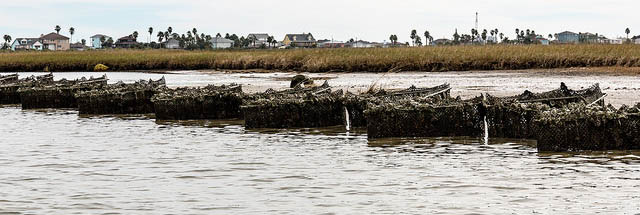We have much more to do and your continued support is needed now more than ever.
Hurricane Season is Here: Preparing our Coast for the Future

Subtropical Storm Alberto just drenched much of the southeast, killing at least four people. Significant storms before the official start of hurricane season seem to be becoming less and less unusual—four of the past six years have seen named storms in May.
As water and air temperatures continue to warm under a changing climate, longer hurricane seasons and stronger storms will become more likely. In fact, a new study shows that Hurricane Harvey’s devastating and record-breaking rainfall was fueled by record high water temperatures in the Gulf of Mexico.
Communities hit hard by storms are painfully aware of how much time, money and resources are needed to fully recover. Towns up and down the Texas coast are struggling to be able to open their doors for the influx of summer beach-goers that, in many ways, keep many small coastal towns financially afloat.
Integrating long-term adaptation strategies from the start will get us out of this cycle of playing catch up to the last storm and instead get ourselves ahead of the next big storm. Addressing existing and future storm risks will require using all the tools in the flood mitigation toolbox to reduce risk and increase our ability to cope with storms by absorbing the brunt of impacts without incurring significant harm.

It’s time to start thinking seriously about how we can adapt and create more resilient coasts for people and wildlife. This will include:
- Planning for sea level rise: Communities should consider the range of realistic projections for sea level rise for their area and update infrastructure accordingly, such as by elevating structures and moving critical community facilities out of areas likely to be affected by flooding from storm surge and sea level rise in the coming decades.
- Incorporating nature: A recent study found that nature-based solutions in the Gulf of Mexico—such as wetland and oyster reef restoration—could avert around $50 billion of projected storm-related losses over the coming decades. This same study showed that natural infrastructure, like vegetated dunes, often yields higher cost-benefit ratio, particularly when sea level rise and increased storm severity are considered.
- Adding up all economic benefits: Natural storm buffers, like vegetated dunes and salt marshes, often have additional economic benefits, such as improving water quality or creating habitat for birds and fish. No one visits a coastal town to look at a sea wall, but people do choose communities with excellent seafood, fishing and birdwatching.
- Preparing for future flooding: With projected increases in extreme rainfall and storm severity, communities need to get better prepared for greater flood risks. Communities should strategically protect wetlands and natural vegetated open spaces within and on the edges of developed areas to mitigate the impacts of coastal and riverine flooding. Purchasing and restoring natural lands along creeks and rivers can also help absorb stormwater and reduce losses in these flood-prone areas.
As the the country continues to recover and rebuild following Harvey, Irma and Maria, the start of hurricane season and the damage from Alberto are reminders that reducing risk to storms is not just about recovery—but preparing for the changes we know are already underway.





















